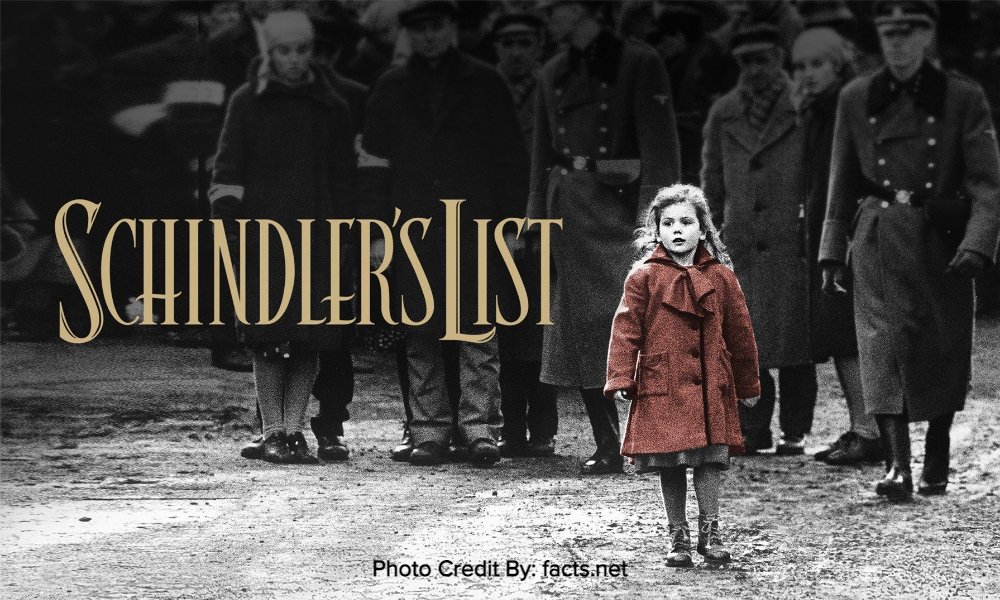Introduction
“Schindler’s List” is one of those films that could only be made once, and thirty more films cannot do justice in capturing the intense experiences of the Holocaust from the perspective of Oskar Schindler. Directed by Steven Spielberg, this work is not only about facts and events but also the psychology of the phenomena of distance and warmth. For film and history lovers, this is not an academic exercise but adds value when viewing these films as interesting ways of portraying people’s behaviors in a systematic affair during one of the most unpleasant periods in history. Such an analysis will show what these emotional tools do to people and where such stories lead us, presenting knowledge that is relevant and valuable for every generation.
Defensiveness in “Schindler’s List”
Understanding Defensiveness
Defensiveness is a response to criticism or threats, which can be shown through Anger, persuasion, or denial. With regards to ‘Schindler’s List’ again, defensiveness, as it is used even in a more metaphorical sense, is one of the factors blocking the character’s self-execution of their moral codes. This is, of course, an emotion on the part of any viewer, hence making it an interesting area of analysis.
Schindler’s Initial Defensiveness
Before the close of the movie, the audience sees how Oskar Schindler becomes defensive as well. For instance, he does not take an active position since he is tired of the excess activity in favor of the Jews. Schindler is motivated by money, and at such a status quo, he does not want to get attached to the outcomes of the immorality. The defensive posture is seen in his attempt to clear himself off all forms of pang of conscience, and so much so, advocating for the making of profits instead of the humane usage of the Jewish men. He can work in the Nazi regime and feels no pricks of conscience.
Amon Goeth’s Extreme Defensiveness
In contrast to the height of Schindler, Goeth would always prefer to stay in cover in any given situation in which he would savagely enforce Nazi measures. Such a defensive move is quite brutal and absolute as it is embedded in Goeth’s bone the ideologies of the Nazis. The logical conclusion would also be that Goeth is emotionally cut off and is ready to inflict pain on other people for so called inner satisfaction which is learnt by the use of other barriers which make them comfortable. This excessive attitude also reinforces the comprehension of the motion picture, which analyzes what happens to human sentiments when they are subjected to ideologies.
Lack of Empathy in “Schindler’s List”
Defining Empathy
It is the ability to understand and relate to someone else’s emotions. It is an important aspect of human relationships as it promotes understanding of other people and compassion towards them. In the film ‘Schindler’s List,’ empathy becomes a strong force for the growth of the characters and for the development of the plot – some characters are shown the latter, while some, the former away, sooner or later.
The Dehumanization of Jews
The movie describes the concept of empathy in the most ideal and brutal way through the gradual dehumanization of the Jews. The Nazis considered the Jews as something subhuman who had no rights. This lack of empathy is represented by the cold practicality of driving people to concentration camps or the easy brutality of soldiers. By portraying this depressing truth, ‘Schindler’s List’ urges people to consider the moral and ethical implications of lack of empathy in society.
Schindler’s Transformation
The Change of Oskar Schindler is a perfect illustration of the significance and influence of empathy. At first, he cares less, but bit by bit, Schindler begins to notice what is going on around him. Empathy urges him so much that he places himself together with other people in the line of danger and saves more than one thousand Jews, which fixes a great psychological conflict. This transformation emphasizes that there is hope even in the most hopeless situations that the subtle plight of proper action encourages.
Exploring the Psychological Dynamics
Psychological Mechanisms Behind Defensiveness
Looking at how and why people become defensive provides insight into how complex its nature is. For example, a person may display defensiveness to defend their ego or avoid ugly realities. In ‘Schindler’s List,’ defensiveness comes out to be self-created and created by society, indicating that it is a rather complicated aspect of human behavior.
The Role of Ideology in Lack of Empathy
As it has become clear, ideology is critical in understanding the why or why not of empathy, for example. In the film, the Nazi doctrine further enhances the absence of compassion and the normalization of evil. This cannot be said about Amon Goeth. In this context, Goeth exemplifies the principle-centered approach supported by an ideology that defines people as enemies and nonhumans. Schindler’s List forces the viewer to think about how ideologies can weaken empathy and strengthen defensiveness.
Personal vs. Systemic Defensiveness
The movie draws a line between the two, namely personal defensive reaction, which in this case is Schindler’s hesitation to move, and systemic defensive reaction, which in this case is the Nazi system. While personal defensive reaction can be addressed by understanding the situation better and moral transformation, systemic defensive reaction is a practice that, for all its injustice, is perpetrated on a bigger scale. This difference explains why there is a requirement for both individual and group change.
Impact of Schindler’s Transformation
Moral Awakening and Empathy
Out of all the traits possessed by man, man’s capacity for pity, as emanating from Schindler’s redemption, is perhaps the best. Oskar Schindler’s actions, like those of any other man in any difficult situation, however, go a step further in developing and supporting the notion that while all may appear to be lost for humanity, there remains the possibility of gathering up and doing the right action by people. This assertion, in addition, goes hand in hand with the aspiration of the people to make the outbearer ready for the flood of goodness that is within every human being.
Lessons for Modern Audiences
When watching Schindler’s List, it gives an impression that it is merely an art work that dispenses educational therapy methods to the audience of modern day television sets. It begs for the willingness to eliminate the self-imposed artificial walls, which normally fence the viewer-spectator and enable one to help others. This sort of moving picture is more than a bedtime story picture to be looking at; its viewers genuinely discover themselves and are inspired to be better.
The Legacy of Schindler’s Actions
There is much more involved in Schindler’s role than just saving lives. It is a source of courage and compassion that inspires many. This is also why the film addresses the general society, urging the view of this film to seek and fulfill that mission, give justification, and assist the betterment of society.
FAQs
How does “Schindler’s List” portray defensiveness?
Because of moral responsibility, Schindler and Goeth use defensiveness, a strategy portrayed in the film through its characters. Schindler’s defensiveness can first be explained by self-interest, even though it is not extreme in any way. Goeth, on the other hand, subscribes to very extreme defensiveness because of the Nazi ideology that kept the Nazis.
What is the significance of empathy in “Schindler’s List”?
Empathy remains the strongest characteristic as it changes Schindler and other people in the film, and in such processes, it also points out the lack of mercy among the Nazis. It reinforces the, in essence, moral sensitivity of the message of the film and the capacity to cure what has possibilities to come.
How does the film address the dehumanization of Jews?
Dehumanization is addressed in particular to the viewer by extensive and horrifying images of concentration camps and cruelty to Jews. It brings home the fact that lacking compassion or forgetting the common decency of people is dangerous and horrific because it adds insult to injury, and people start dehumanizing others.
What role does ideology play in the lack of empathy in the film?
In the words of Janet, In Lulz’s rule, ideology is important because it helps establish a system that justifies the negation of the other. The movie highlights how Nazi ideology works systemically to sustain defensiveness and heal its unhealthiness which is the loss of empathy leading to the most ferociously barbaric acts.
What lessons can be learned from Schindler’s transformation?
Schindler’s Change is an inspiration in many ways and instills the importance of very basic human qualities-radner. These include compassion as empathy. The populace is stirred never to duck from their responsibilities and more importantly stand up and protect the disadvantaged.
Conclusion
“Schindler’s List” is a touching story at the heart of all human feelings: refusal to feel and the willingness to empathize with others. These issues can still be addressed in today’s world, and the viewers cannot forget the basic principle of being kind and accommodating. The values and lessons from the film illustrate how society should be and how the old ideals advocating hate must be defeated.




